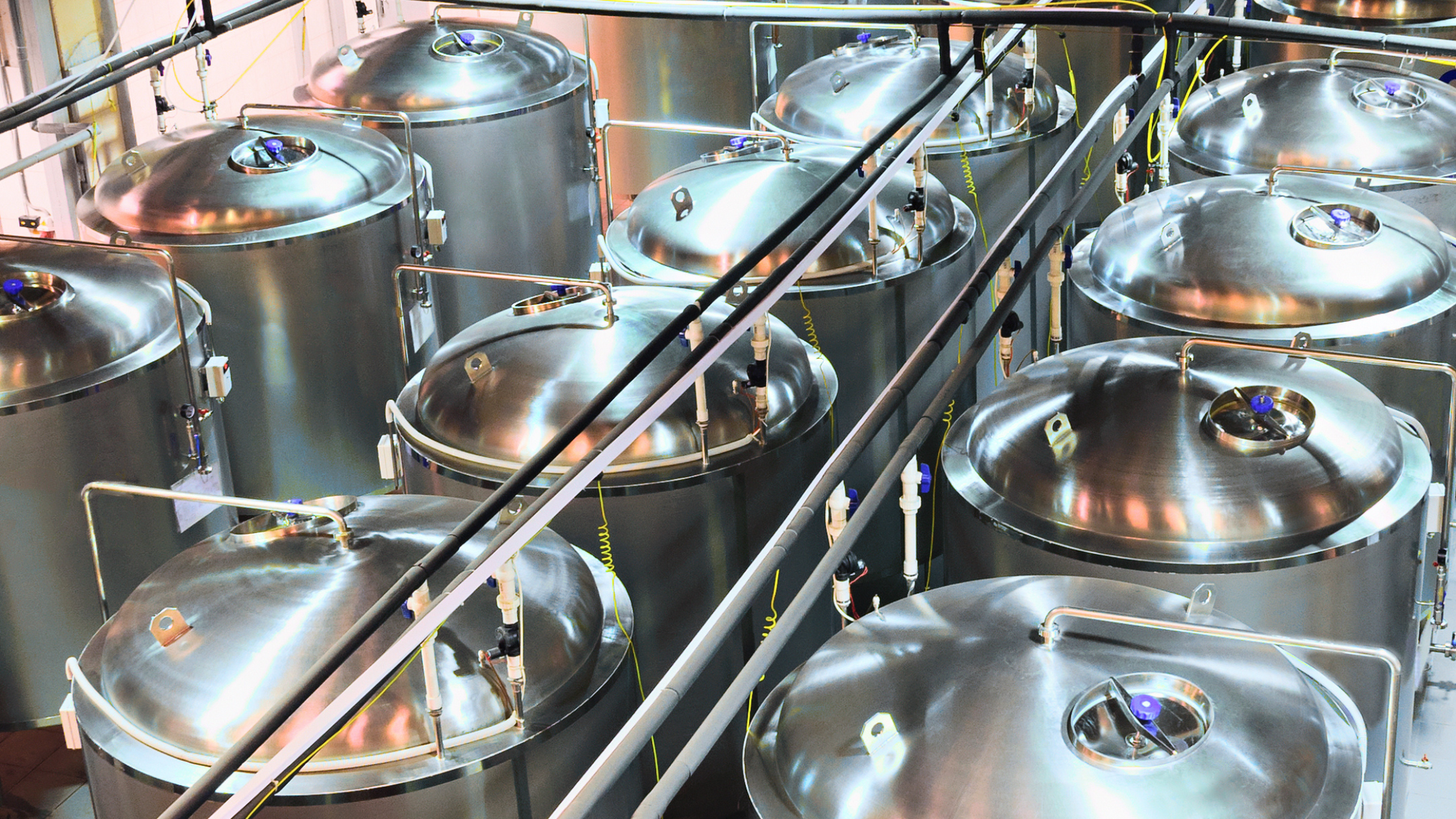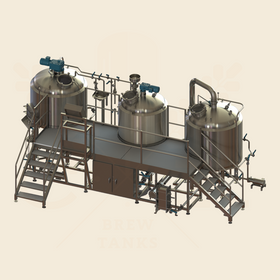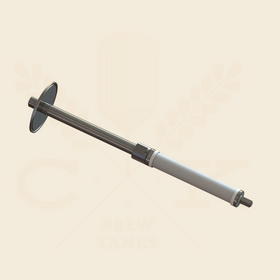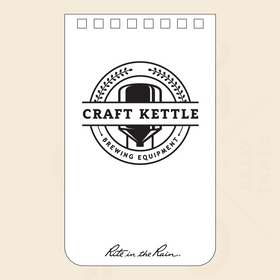
Designing the Glycol Cooling Pipework in a Craft Brewery: Ensuring Efficiency and Consistency
Craft brewing is an art form, a blend of creativity and science. As much as it's about unique flavors and brewing techniques, it's also about the technical aspects that ensure the quality of the final product. One such crucial technical aspect is the glycol cooling system, which is essential for maintaining precise temperature control during fermentation and storage. In this blog post, we'll explore the intricacies of designing the glycol cooling pipework in a craft brewery, focusing on the First in/Last Out design principle and the importance of avoiding air pockets to ensure efficient glycol flow.
Understanding the Glycol Cooling System
Before diving into pipework design, let's understand what a glycol cooling system does in a brewery. Glycol, a food-grade antifreeze, circulates through a network of pipes to maintain the desired temperature in fermentation tanks and storage vessels. This controlled temperature is vital for the yeast to work correctly during fermentation and for storing the beer at optimal conditions afterward.
The First In/Last Out Design Principle
The First In/Last Out design is a cornerstone of glycol cooling systems without automated pressure balancing valves. The principle refers to glycol entering and exiting each vessel from the glycol header. In this design, the glycol enters (First In) the vessel closest to the cooling source and exits (Last Out) furthest to the source. With this arrangement, each vessel's flow path should be about the same total roundtrip length of pipe on each vessel. This design ensures that the flow across each cooled vessel is evenly distributed without the need to regulate the flow using valves.
Why First In/Last Out Matters
- Even Cooling: It prevents the problem of having excess flow through some vessel jackets and decreased or no flow through other jackets, which can lead to inconsistent fermentation temperatures.
- Energy Efficiency: This method maximizes the use of the cooling capacity of glycol as the system does not need to be “running hot” to make up for the inconsistent cooling of particular vessels, thus reducing overall energy costs.
- System Longevity: Even workload distribution prevents overburdening any part of the system, enhancing its longevity.
Avoiding Air Pockets in Glycol Pipework
Another critical aspect of designing glycol cooling systems is the avoidance of air pockets. Air pockets can significantly impede the flow of glycol, reducing the efficiency of the cooling system.
The Problem with Air Pockets
- Reduced Flow: Air pockets can block glycol flow, leading to inefficient cooling.
- Temperature Inconsistency: Blocked glycol flow can cause temperature fluctuations, which are detrimental to the brewing process.
- Increased Wear and Tear: Air pockets force the cooling system to work harder, leading to increased wear and tear and potentially shortening the system's lifespan.
- Maintenance Challenges: Air pockets can make maintenance more challenging, as they may require manual intervention to remove the air from the system.
- Phantom Cooling: In very specific circumstances, the air can get stuck in a specific location, and because air compresses more than liquid, the air compression can cause glycol to flow backward into a vessel, thus cooling a vessel that is not calling for glycol.
How to Avoid Air Pockets
- Run System Header Above Jacket Inlets: Running the glycol system header above the individual tank jackets ensures air flows out of the jackets and back into the header.
- Properly-Designed Conical Jacket Inlet/Outlets: A vessel's inlet and outlet ports should run parallel to the ground, not perpendicular to the tank cone. This is to ensure there is not a high point in the plumbing that traps air and prevents flow through the tank jacket.
- Proper Sloping of Pipes: Pipes should be sloped correctly to allow air to travel back to the glycol reservoir or designated air removal points.
- Strategic Placement of Air Bleed-Off Vents: Installing vents at high points in the system where air is likely to accumulate can help release trapped air.
- Regular Maintenance: Regular system checks for leaks, or blockages can prevent air from entering the system.
- Careful System Filling and Purging: When filling or purging the system, it should be done slowly and carefully to avoid trapping air.
Implementing an Effective Design
Incorporating the First in/Last Out design and ensuring the avoidance of air pockets requires meticulous planning and understanding of fluid dynamics. Here are some steps to consider:
- Detailed Planning: Use detailed schematics and flow diagrams during the planning stage to visualize the glycol path and identify potential problem areas.
- Expert Consultation: Working with a brewery engineer or a specialist in cooling systems can provide valuable insights and help avoid common pitfalls in system design.
- Quality Materials: Use high-quality, durable materials for pipework to minimize the risk of leaks and ensure long-term reliability.
- Flexible Design: Consider future expansion possibilities. A well-designed glycol system should be scalable to accommodate additional fermentation tanks or increased production capacity.
- Precision in Installation: Ensure the installation is carried out precisely, adhering to the planned slopes and angles for optimal glycol flow. This step is crucial for the effectiveness of the First in/Last Out design and for preventing air pockets.
- Monitoring and Control Systems: Incorporate advanced monitoring and control systems to monitor temperatures and glycol flow rates in real-time for larger systems. This technology can quickly identify issues like temperature deviations or flow disruptions, allowing for prompt corrective actions.
- Pipework Insulation: Proper insulation of the glycol pipes is crucial. This minimizes energy loss and prevents external temperature interference, ensuring the glycol remains consistent throughout the system.
- Flush the System: Implement a routine for flushing and cleaning the system, particularly on initial startup or after changes to the pipework. This not only maintains the quality of glycol but also helps remove any potential air build-ups and sedimentation inside the pipes. Without flushing a system, it is common for debris to get stuck in a valve holding a valve open at inopportune times.
- Staff Training: The brewery's staff should be well-trained in understanding the glycol system. Knowledge about the basic mechanics of the system, troubleshooting, and maintenance routines are vital for the efficient and smooth operation of the cooling system.
- Emergency Protocols: Have emergency protocols in place for handling glycol leaks or system failures. Quick response and management can prevent extensive damage and ensure safety.
In conclusion, designing the glycol cooling pipework in a craft brewery is a complex but essential task. Adhering to the First In/Last Out principle ensures efficient and uniform cooling, while meticulous planning and installation can prevent issues like air pockets that hinder glycol flow. Remember, a well-designed glycol cooling system maintains the desired temperatures and contributes to the quality and consistency of the beer produced. As craft brewing continues to evolve, the importance of such technical aspects becomes ever more crucial in differentiating a good brewery from a great one.




